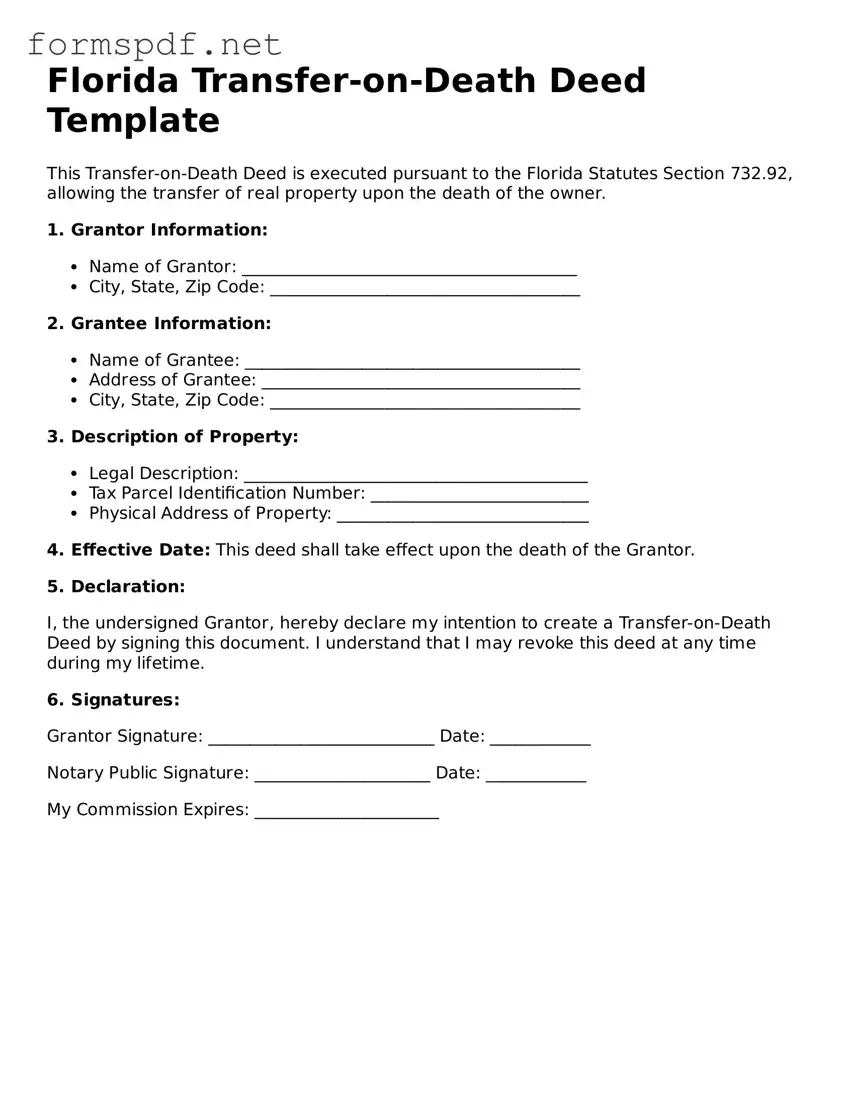Florida Transfer-on-Death Deed Template
This Transfer-on-Death Deed is executed pursuant to the Florida Statutes Section 732.92, allowing the transfer of real property upon the death of the owner.
1. Grantor Information:
- Name of Grantor: ________________________________________
- City, State, Zip Code: _____________________________________
2. Grantee Information:
- Name of Grantee: ________________________________________
- Address of Grantee: ______________________________________
- City, State, Zip Code: _____________________________________
3. Description of Property:
- Legal Description: _________________________________________
- Tax Parcel Identification Number: __________________________
- Physical Address of Property: ______________________________
4. Effective Date: This deed shall take effect upon the death of the Grantor.
5. Declaration:
I, the undersigned Grantor, hereby declare my intention to create a Transfer-on-Death Deed by signing this document. I understand that I may revoke this deed at any time during my lifetime.
6. Signatures:
Grantor Signature: ___________________________ Date: ____________
Notary Public Signature: _____________________ Date: ____________
My Commission Expires: ______________________
